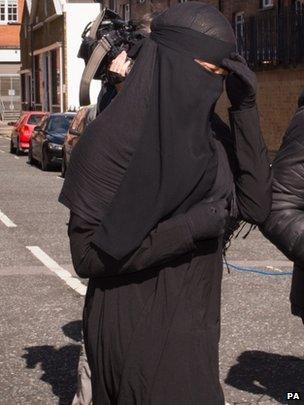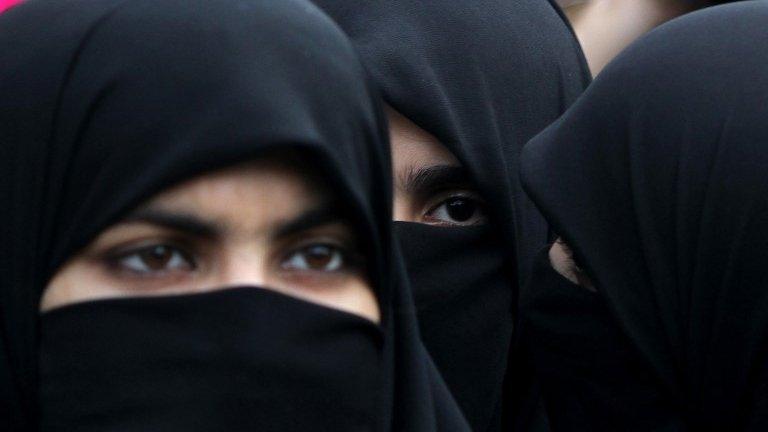Analysis: The niqab judgement explained
- Published
Last week I blogged on a very modern multicultural dilemma at Blackfriars Crown Court - where a judge had to rule on whether a defendant could appear in the dock wearing a niqab, a type of Muslim veil that conceals the whole face, other than the eyes.
Well, today we received Judge Peter Murphy's ruling on the issue - and he said that the woman must remove her niqab while she gives evidence.
So the ultimate outcome of this case could be an extremely important legal milestone in how the UK balances the rights of religious minorities with the duties of all citizens.
You can read the news report of the case here - and add your view here.
This is the first such case to reach an impasse over a veiled defendant. As far as anyone knows, including the judge himself, there's never been an exactly comparable situation in another British court.
And that's the problem the judge says needs solving.
Elephant in the courtroom
In his 36-page ruling, external, Judge Murphy's central point is that nobody has ruled - let alone Parliament voted - on whether the religious freedom to wear a niqab and cover one's face trumps the court's duty to ensure that a trial delivers open and effective justice.

The defendant: Considering her options
In other words, leaving the decision to judges to deal with the niqab on a case-by-case basis is not good enough. It's a recipe for what the judge today called "a kind of judicial anarchy".
"The relegation of such important issues to the sphere of 'judge craft' or 'general guidance' has resulted in widespread judicial anxiety and uncertainty and to a reluctance to address the issue," he says.
"The niqab has become the 'elephant in the courtroom'."
Judge Murphy says that while he had been referred to existing and comprehensive judicial guidance on equality, the niqab issue ultimately came down to a question of law.
Everyone has a right to manifest their religion - but the courts have a separate duty to run effective and open trials.
The courts could order the niqab to be removed, argues the judge, if the request were based in law, legitimate, proportionate and necessary in a democratic society.
He says: "If a fair trial is to take place, the jury (and for some limited purposes the judge) must be able to assess the credibility of the witnesses - to judge how they react to being questioned. particularly, though by no means exclusively during cross-examination.
"In my judgement, the adversarial trial demands full openness and communication... I am firmly convinced that the wearing of the niqab necessarily hinders that openness and communication."
In his order, the judge rules that the defendant can remained veiled during the case providing there is another woman in court who can verify her identity.
But when it comes to giving evidence, she must remove the niqab so that the judge, jury and lawyers can see and assess her responses.
He has offered a screen to shield her from public view or the alternative opportunity to give evidence via live video link.
Critically, he orders that there should be no publication of a court sketch of the woman unveiled.
So where next?
Judge Murphy's powers only go so far. That's why at the top of his lengthy judgement he expresses "hope" that the senior judiciary or Parliament grasp the legal nettle.
The defendant, who is considering her position, could challenge the outcome in the High Court. If she did, and lost there, the case could go higher still.
Britain has never had a debate like France which banned the veil in public space. There are complex reasons for that, not least the deep historic roots of French secularism, external which requires an absolute - arguably militant - separation of faith and the state.
On our side of the English Channel, faith has long been part of the fabric of the state - so much so that the court at the heart of the veil case is named after a medieval religious order.
The small ironies of history aside, this case and the debate over veils in education might have started that public debate.
- Published16 September 2013

- Published16 September 2013

- Published16 September 2013
